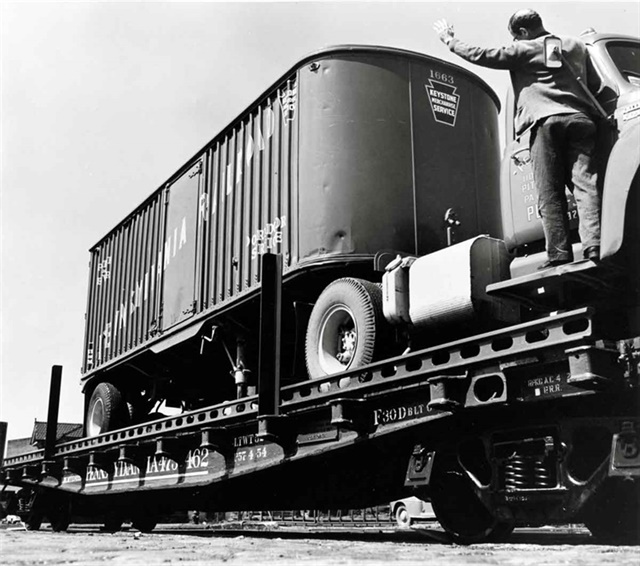Film Promotes Pennsylvania RR’s TrucTrain Service in the 1950s
The guy on the running board is there strictly for the camera, because drivers in piggyback terminals were very good at backing trailers onto flatcars. Photo: Pennsylvania Railroad/Classic Trains
“>
The guy on the running board is there strictly for the camera, because drivers in piggyback terminals were very good at backing trailers onto flatcars. Photo: Pennsylvania Railroad/Classic Trains
“>
Before I was a truck buff, I was a train fan. So, when I got into the truck-writing business, first in 1973 and then for good in ’78, it pained me to hear drivers and executives talk about railroads as “the enemy.” Sometimes they gloated over how they were taking business from the rails, and they could do it because they offered better service.
Meanwhile, railroad people had also come to view the trucking industry as a great threat and an unfair competitor, because taxes were used to build highways while the railroads built and maintained their own tracks and rights-of-way, and paid taxes on all of it. They didn’t acknowledge that truck operators paid plenty of extra taxes to use the highways, and continue to. Books have been written on that subject, so I shan’t go further with it here.
But there was an area where railroads and trucking companies cooperated in the 1950s. That was trailer-on-flatcar (TOFC) service, also known as “piggyback.” I just came across the above photo, shot about 1950, of a short trailer being backed onto a piggyback flatcar in Chicago. That got me searching for more “pig” pictures, and I immediately found a short promotional film produced for the long-defunct but once powerful Pennsylvania Railroad.
The 1955 film is almost pro-trucking, with the narrator calling it “a great industry.” It talks about crowded highways populated by cars and an increasing number of large trucks, and includes one scene of “blocked” traffic (today, we call that gridlock). But, the narrator proclaims, the solution lies with America’s railroads and their “excess capacity” – caused by truckers stealing their freight, …Read the rest of this story
